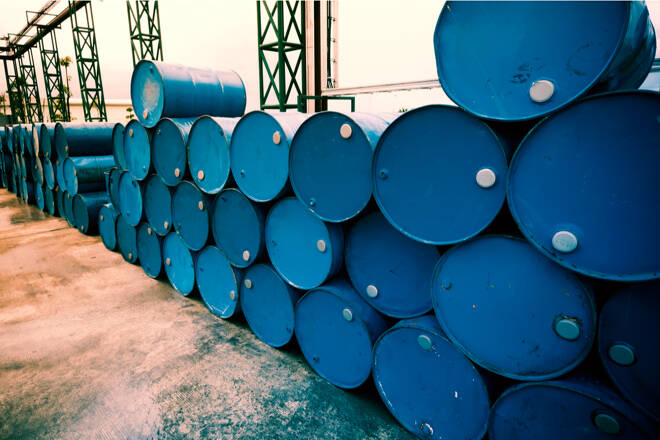Advertisement
Advertisement
Oil Price Fundamental Daily Forecast – WTI Hits One-Year Low as China’s COVID Protests Spur Demand Worries
By:
China’s stringent COVID restrictions have taken a heavy toll on its economy, raising concerns about fuel demand.
U.S. West Texas Intermediate and international-benchmark Brent crude oil futures are trading sharply lower as massive protests in China over strict COVID-19 restrictions have raised concerns over a global recession and lower fuel demand.
At 09:53 GMT, January WTI crude oil futures are trading $73.97, down $2.31 or -3.03% and February Brent crude oil is at $81.34, down $2.37 or -2.83%. On Friday, the United States Oil Fund ETF (USO) settled at $66.66, down $0.75 or -1.11%.
Confusion over Group of Seven (G7) policy is also adding to the selling pressure as well as uncertainty ahead of the OPEC+ meeting on December 4. The turmoil in China is also driving up the safe-haven U.S. Dollar which is weighing on foreign demand for dollar-denominated crude.
Escalating Protests in China Raise Concerns over Fuel Demand
Protests in China against the government’s strict anti-COVID policies are raising enough uncertainty about the strength of its economy to drive investors away from riskier assets like crude oil.
China’s stringent COVID restrictions have taken a heavy toll on its economy, raising concerns about fuel demand. Authorities have implemented various measures to revive growth, but there is no evidence that anything is working at this time. On Friday, for example, the People’s Bank of China (PBOC), the nation’s central bank, said it would cut the reserve requirement ratio (RRR) for banks by 25 basis points (bps), effective from December 5.
Inability of G7 to Determine Russian Price Cap Adds to Bearish Outlook
Group of Seven (G7) and European Union diplomats have been discussing a price cap on Russian oil of between $65 and $70 a barrel, with the aim of limiting revenue to fund Moscow’s military offensive in Ukraine without disrupting global oil markets, according to Reuters.
For weeks, the anticipation of this plan has propped up prices, but all that fell apart when a meeting of European Union government representatives, scheduled for Nov. 25 evening to discuss the issue, was cancelled. Last Thursday, EU governments were split on the level at which to cap Russian oil prices.
The price cap is due to come into effect on Dec. 5 when an EU ban on Russian crude also takes effect.
Wildcard is OPEC+ Production Levels
The Organization of the Petroleum Exporting Countries (OPEC) and its allies including Russia, known as OPEC+, will meet on December 4.
In October, OPEC+ agreed to reduce its output target by 2 million barrels per day through 2023.
At this next meeting, OPEC+ will be focused on Western plans for a price cap on Russian oil as well as taking into account the condition and balance of the market.
OPEC+ is the wildcard. Oil prices are likely to head further lower until the group agrees on a further reduction of production quota.
Others are adding that the U.S. may save prices from falling fast if it moves to reload its strategic petroleum reserves (SPR). But this may be difficult since the Biden Administration is committed to driving down gasoline prices.
For a look at all of today’s economic events, check out our economic calendar.
About the Author
James Hyerczykauthor
James Hyerczyk is a U.S. based seasoned technical analyst and educator with over 40 years of experience in market analysis and trading, specializing in chart patterns and price movement. He is the author of two books on technical analysis and has a background in both futures and stock markets.
Advertisement
